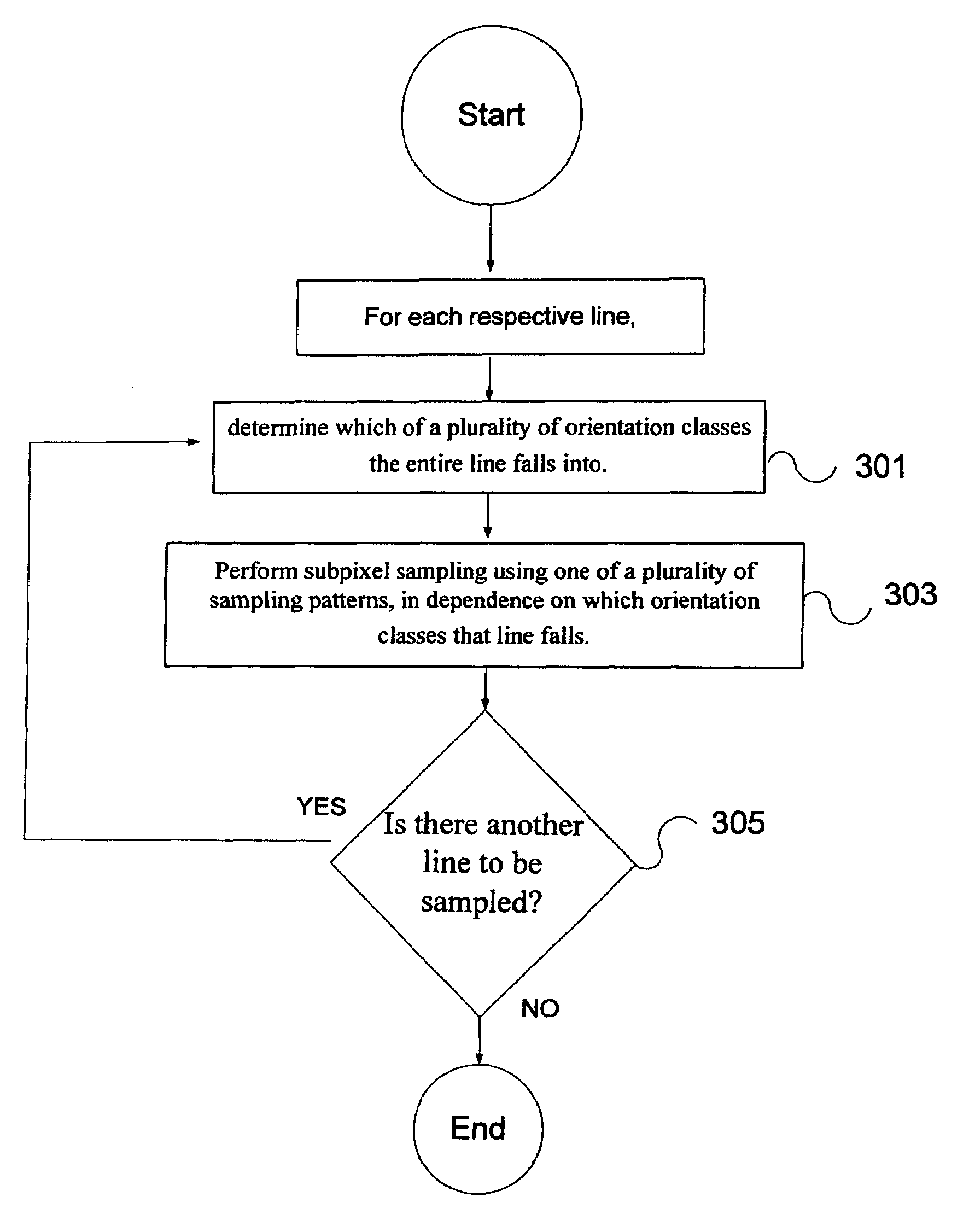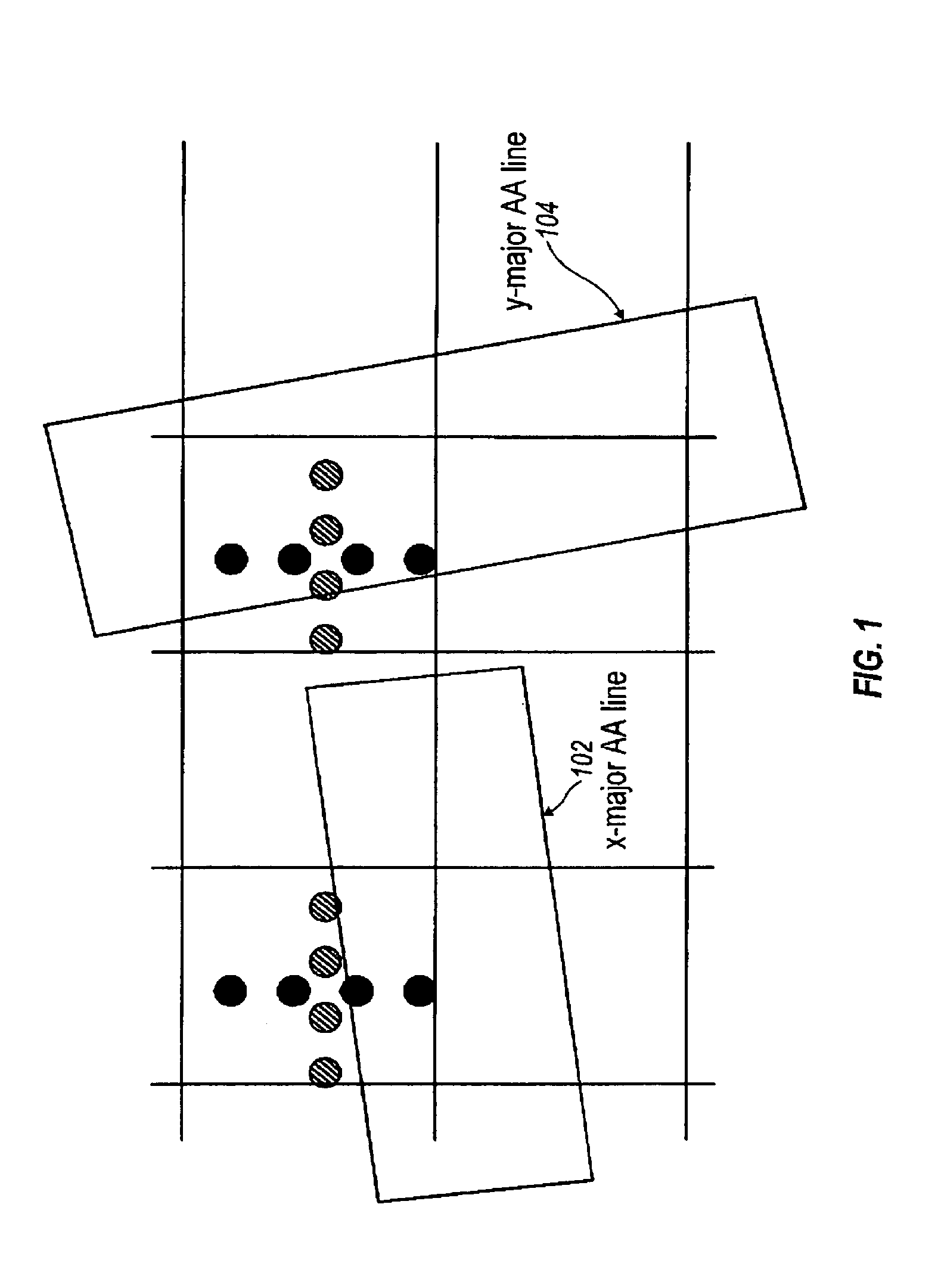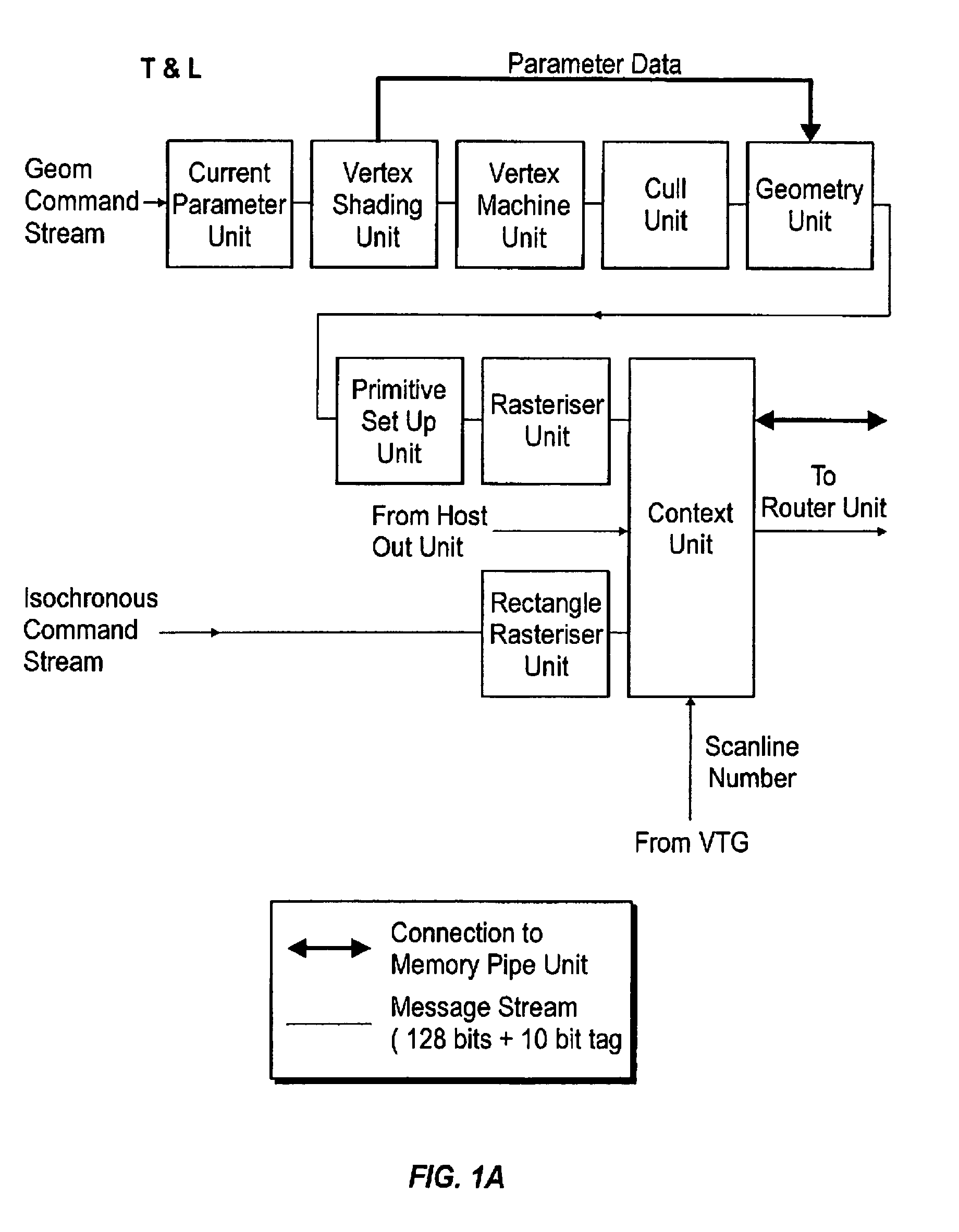High quality antialiased lines with dual sampling pattern
a sampling pattern and high-quality technology, applied in the field of 3d computer graphics, can solve the problems of graphics system idleness, high cost, and number of places where escape calls are carried, and achieve low gate cost, high speed, and reduce contrast
- Summary
- Abstract
- Description
- Claims
- Application Information
AI Technical Summary
Benefits of technology
Problems solved by technology
Method used
Image
Examples
Embodiment Construction
[0021]The numerous innovative teachings of the present application will be described with particular reference to the presently preferred embodiment (by way of example, and not of limitation).
[0022]Anti-aliased lines have two conflicting requirements: speed and quality. For high speed (or low gate cost) the number of sub-pixel samples needs to be kept low, but for high quality the more sub pixel samples the better. A single fixed pattern of samples is usually chosen for all lines. This has the disadvantage that a given pattern will lead to varying quality across lines of different orientations. For example, a given pattern may generate good quality for vertical lines, but lead to lower quality for horizontal lines.
[0023]All lines can be classified as x-major or y-major depending whether the x or y extent of the line is larger. A given fixed pattern will normally generate inferior quality for one or other of these line types. One way to fix this is to take more sample points, but thi...
PUM
 Login to View More
Login to View More Abstract
Description
Claims
Application Information
 Login to View More
Login to View More - R&D
- Intellectual Property
- Life Sciences
- Materials
- Tech Scout
- Unparalleled Data Quality
- Higher Quality Content
- 60% Fewer Hallucinations
Browse by: Latest US Patents, China's latest patents, Technical Efficacy Thesaurus, Application Domain, Technology Topic, Popular Technical Reports.
© 2025 PatSnap. All rights reserved.Legal|Privacy policy|Modern Slavery Act Transparency Statement|Sitemap|About US| Contact US: help@patsnap.com



